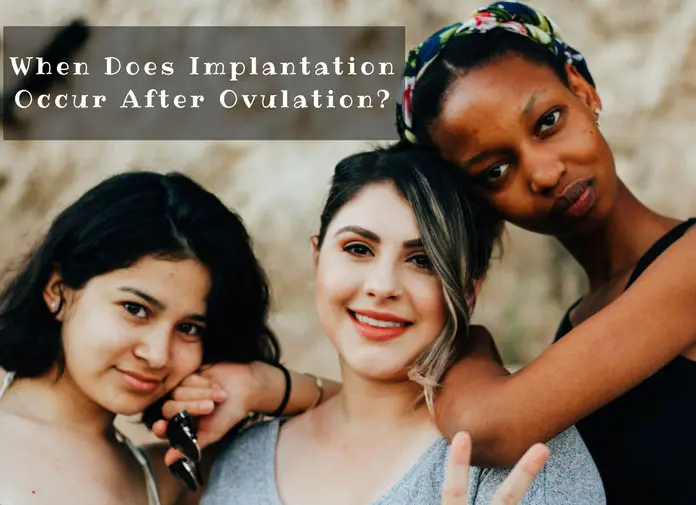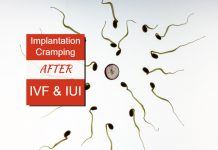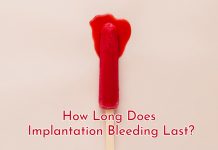When does implantation occur after ovulation? Implantation occurs after 10 days from ovulation on an average. Some women can take longer or have implantation earlier. The time span normally ranges between 7-12 days from ovulation. Implantation bleeding occurs simultaneously or shortly after the egg attaches to the wall of the uterus. Early pregnancy factor could be the next-gen pregnancy test that releases in mother’s blood within 48 hours after sex.
When does implantation occur after ovulation? Can implantation happen 10 days after ovulation?
This question has the answer to itself. Implantation usually occurs 6-12 days after ovulation.
When is implantation possible? On an average scale, most women have implantation ten days after ovulation. 10 DPO is the most likely day for implantation.
Days Post Ovulation (DPO) is a term used to describe the events after ovulation.
Implantation is the process of attachment of the young embryo to the endometrial lining. According to theory, this process should occur on the 7th day after fertilization.
Conception occurs within 24 hours after ovulation. The egg can live only for 24 hours and after that even if sperms are present in significant number fertilization will not happen.

When can fertilization occur?
Fertilization occurs after ovulation. It cannot happen before ovulation for apparent reasons. The fusion of sperm and egg is fertilization. Conception is also successful fertilization.
A woman is chemically pregnant after this step. Fertilization is the invasion and incorporation of the genetic material of sperm and egg.
The fertilizin and anti-fertilizing reactions cause fertilization. The egg secretes a substance called fertilizin and sperms have anti fertilizin on their surface. The same species of eggs and sperms can undergo fertilizin and anti fertilizin reaction.
Fertilization takes place in the ampullary-isthmic junction in fallopian tubes.
The male partner discharges sperm close to the cervix in a female’s vagina during coitus. A single male discharge has about 300 million sperms.
Upon entry of one sperm, the wall of the egg becomes impermeable for other sperms. Only a single sperm fertilizes the egg.
A sperm has 23 and egg has 23 chromosomes, the zygote inherits half genetic material from each parent.
How long does it take for fertilization?
It can take about 30 minutes to 24 hours for sperm to reach eggs. Sperms move at the rate of 1.5 to 3.3 mm per minute.
Out of a total 300 million, only a thousand sperms can travel to the site of fertilization. The fighter cells or white blood cells of the vagina engulf the sperms.
Capacitation of sperms takes about 5-6 hours. The secretions of the female’s genital tract activate the sperm and enable it to penetrate. The egg has a radiating layer of projections called corona radiata. Sperm needs to pass this mesh and thus requires capacitation.
The secretions of male glands neutralize the acidity of the vagina. It also has nutrients for nourishing sperms.
Primarily contractions of uterus and Fallopian tubes cause the upward movement of sperms. Later on, they move using their tails.
How long does conception take? When does conception occur?
Sperms take 15 cm to reach Fallopian tubes traveling at a speed of 3-4 mm per minute. They can stay in the vagina for five days and take longer to reach there.
The ovary releases a secondary oocyte every month. After the entry of sperm, the secondary oocyte undergoes a reduction division and becomes an egg.
Optimal pH, calcium, and magnesium are essential for fertilization. If calcium is not present, then fertilization doesn’t occur.
After the sperm and egg fuse, the membrane of the egg undergoes depolarization. It prevents more than one sperm from entering the egg.
Genetic abnormalities are a result of more than the required set of genetic material and defects.
The human egg cannot undergo any division without sperm bringing the required components.
Upon the entry of sperm, the zona pellucida hardens.
This membrane is responsible for guiding the egg to the right place for implantation.
What is the earliest fertilization can occur?
It takes at least 45 minutes for sperms to reach an egg. Another 5-6 hours are for capacitation.
Later the fertilizin-antifertilizin reaction takes time.
The earliest fertilization can occur after 24 hours of ovulation. Fertilization restores the total genetic material of a human cell in a zygote.
Fertilization is also responsible for the sex determination of the baby. The chromosome of the father decides whether it will be a girl or father genetically.
How long after ovulation does implantation occur?
- Implantation is the process of fertilization and cleavage.
- After thirty hours from fertilization, the first division of zygote.
- Forty hours from fertilization, next division takes place.
- After three days of fertilization, the fourth division takes place. A 16 cells structure with the shape of mulberry called morula forms after this.
During the process of the division of zygote, called cleavage, it travels down the tube and reaches the uterus.
On the 6th day after fertilization, a 64 celled structure called blastocyst forms and is ready for implantation.
Fertilization occurs within 24 hours from ovulation. These events can be timed from ovulation. On 3 days post ovulation (3 DPO), the fourth cleavage of the egg occurs.
After 6 days past ovulation (6 DPO), the blastocyst or young embryo reaches the endometrial lining. Implantation occurs 7 days past ovulation.
When does implantation occur 10 days after ovulation (10 DPO)?
The processes can take longer than expected time. In that case, implantation can occur 6-12 days after ovulation (6-12 DPO).
Ideally, on 7 DPO, the zygote invades the lining of the uterus causing implantation bleeding.
The blood vessels move for creating a space for the incoming egg. There is scanty spotting because the embryo is too tiny to cause much damage.
After the zygote undergoes cleavage, the trophoblastic projections pierce the endometrial lining and lead to implantation.
Early pregnancy factor
Early pregnancy factor (EPF) is a chemical released after 48 hours after fertilization. It releases before implantation.
In some cases even after the release of EPF pre-implantation events can go wrong and cause pregnancy failure.
The early pregnancy factor is present in pregnant woman blood serum. Early pregnancy factor can be used for super early pregnancy diagnosis with an accuracy of 88.6%.
There is a chance of 17.1% false positive pregnancy test and 3.4% false negative pregnancy test.
EPF is useful for a super early pregnancy test before implantation. The study showed that beta hCG is not the first indicator of pregnancy.
All sera had low beta hCG activity less than 5 mIU/mL but had early pregnancy factor 2-6 days post ovulation.
This test can be useful for early termination of pregnancy in cases of unplanned and unwanted pregnancy.
When does implantation occur after ovulation?
Implantation generally occurs 6-12 days after ovulation. It can happen on 10 DPO on an average.
Implantation needs to occur before the expected period day. After period date bleeding is generally not because of implantation.
Implantation bleeding lasts for few minutes to at most two days. Implantation cramping and other symptoms may go unnoticed.
If the fertilized egg fails to implant, then it can come out as period.
When does implantation bleeding occur?
Implantation bleeding is like spotting. The blood stays in the vagina for some time and later comes out as brown discharge.
Bright red blood cannot be implantation bleeding. Implantation is a rapid process, and so implantation bleeding occurs shortly after implantation.
When does egg embedment occur? Predicting the exact time is impossible. It can take a week. Women taking infertility therapies know when the egg was placed inside their tubes or uterus. Therefore, they can calculate the time implantation.
Egg embedment is the attachment of egg to the wall of the uterus. Egg embedment is another way of saying implantation.
Implantation occurs after 7-12 days post ovulation.
- After fertilization, the egg covered with glycoproteins starts moving down tubes.
- The trophoblast fibers penetrate the mucus membrane of the uterus.
- The uterine glands secrete factors and alleviate the egg embedment. In gynecology, this process is hatching.
- The future embryo needs nourishment. After a point of time, it needs to attach to uterine lining for nutrients.
- If the egg has no genetic abnormality, then the pregnancy proceeds further. Otherwise, the female’s womb rejects the egg and menstruation begins. In such cases you see symptoms of pregnancy but negative pregnancy test.
- The egg moves gradually into the upper strata of the endometrial lining. It is the most critical time of early pregnancy. The implantation process takes about 48 hours at most.
About 37% of women have implantation 9 days post ovulation. 9 DPO implantation is common. But it may take 7-12 days for implantation in other cases.
A false negative pregnancy test after implantation is due to hCG levels being lower than 25 mIU/mL. Take a pregnancy test 14-15 DPO to get an accurate result.
What happens after implantation?
The embryonic layers begin producing necessary hormones. But if the female has an inflammatory disease or any other abnormalities, then the fertility reduces.
Implantation signs and symptoms include a slight pulling in the lower abdomen. Women might experience cramps and have implantation bleeding.
This occurs before 14 days after ovulation which is the time for the due period.




![Implantation Bleeding With Twins [How long does IB last with twins?] Implantation Bleeding With Twins](https://www.pregnanteve.com/wp-content/uploads/2019/01/implantation-bleeding-with-twins-218x150.jpg)





Metformin also theoretically avoids the risks of multiple pregnancy, ovarian nbsp; The role of metformin in ovulation induction: Current status Insulin resistance (IR) has been identified as a significant contributor to the pathogenesis of PCOS. Metformin has been used alone or combined with CC in induction of ovulation. Its mechanism of action and role in ovulation induction will be discussed in three different indications: Naïve PCOS, CC-resistant nbsp; What dose of metformin do you use in women with PCOS (with -500mg in pills twice daily) in co-treatment with clomiphene-citrate in PCO women with insulin resistance; in poor responders I have excellent results However, even after counselling some patients are reluctant to take the drug when they noticed that it is used in treating diabetics!